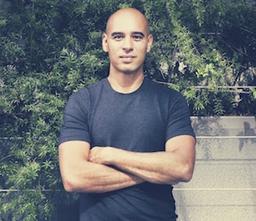Simplifying your life isn’t a one-time project that you can finish and be done with; it’s actually a continuous cycle.
At least that’s what I’ve found in my many years of simple living. I’ve downsized numerous times, in all areas of life, and I keep coming back to the process of simplifying.
The simplicity cycle usually goes something like this:
Inspiration Phase: You find something that sparks an interest, and start exploring it (reading about a new topic, learning a new skill, exploring a new activity, or starting a new project). This is the inspiration phase.
Addition Phase: As you explore, this leads you to more complexity—to buying things, reading more and more, or finding new inspiration and ideas. This is the addition phase.
Contemplation Phase: At some point, you might pause to consider the bigger picture of what you’re doing. Is it really important? If it is, what’s the essential part of it? Can you pare down? Many people skip this phase and just keep cycling through the first two phases.
Paring Down Phase: If you decided to pare down, this is where you start to let go of things. You figure out what’s essential to your learning, and if you don’t scrap the entire venture completely, you might keep just a few things. For example, if you start learning about chess, you might buy a chess set and a bunch of books and apps. But in the paring down phase, you might keep only one book or a few apps or decide that chess isn’t important enough to keep in your life at all.
If you’re into simplifying and figuring out what’s essential, you’ll do the last two phases. If you’re like most people, you’ll just keep doing phases one and two, which leads to a growing amount of clutter and complexity.
Life Lessons and Simplicity
As you might guess, I find the last two phases to be really important. But the first two are also important because they’re about continual learning, curiosity, growth, creativity, and more. I haven’t been able to stop myself from doing the first two phases, so I continue to repeat this simplicity cycle several times each year.The first two phases are where you get excited about something and are motivated to find out as much as you can. This is an essential human drive, and I would never want to suppress it. But here’s what I’ve learned about managing it well:
Practice self-control. I have to hold myself back from acquiring in the addition phase. I do this by reminding myself how much I wasted in the past when I bought too many things early on. It’s really hard to hold back when you’re excited, but it’s important to remember that following your every urge isn’t usually very helpful.
Don’t believe the fantasy. The inspiration phase can be a wonderful thing, but sometimes it’s just a fantasy that grips us. There’s nothing wrong with fantasy. But the reality of taking on a new challenge will be quite different once we dive into it. That’s not to say we shouldn’t go after it, but we should realize that it will be very different than how we picture it—and probably not as exciting. And when it grips us and takes us to the addition phase, it can lead us to spend too much time or money on unimportant things.
Identify the true need. Often the inspiration phase starts when we think we really want something, or even need it. But it’s not always a true need. We rarely explore how to get our true needs met without the addition phase, and it’s something worth considering as we think about the big picture of our lives. What are true needs? More on that in the next section.
Take a step back. The contemplation phase can come at any time—maybe even before you start the addition phase. Right after you start the addition phase, you can pause to think about whether it’s worth pursuing. Take a step back and look at the big picture. Why are you doing this? Is it meaningful to you? Does it meet your true needs? Is the reality going to be anywhere close to the fantasy? What can you get rid of? What’s truly essential?
Learn by paring down. The paring down phase can be very liberating. Once you’ve had the realization that you want to simplify, it can be a huge burden to let things go. At the same time, it can be difficult to let go if you’re still holding on to hope or fantasy. There’s also the painful regret of buying too much and being wasteful. But it’s not wasteful if you’ve learned something from it or improved yourself. So give thanks, learn from the experience, and let go.
In this whole process, I find that real learning is about true needs. It’s hard to understand true needs until you’ve gone through this process a few times. Here are a few ideas about how to identify the difference between true needs and wants.
Finding Your True Needs
Going through the simplicity cycle helps you practice letting go of the things that you don’t really need. Often, they might actually be a burden that you don’t want, and letting go can be very liberating.If you go through the cycle many times with consciousness, you can start to figure out the kinds of things you crave and that excite you, but that aren’t really true needs. They seem great at first, but they don’t really satisfy anything deep within you.
Here are a few examples of things that didn’t satisfy a real need for me:
Chess: I really enjoyed learning about chess, but the competitive aspect and the thousands of hours you need to spend on practice to get good at it weren’t worth it for me. Getting really good at chess didn’t hold real meaning. The true need was learning, and I can do that for free in many areas of life.
Gourmet Food: When I moved to San Francisco, I discovered some amazing restaurants, from neighborhood gems to Michelin-starred, world-class gourmet spots. I went crazy for about a year, going to as many as I could afford. It caused me to gain weight, lose a lot of money, and get tired of rich food. I did the same kind of deep dive with pizza, coffee, wine, and beer at different times. To be honest, it was all a waste, and I’m glad I’m over it. The true need was exploration, and I can do that without going broke or getting fat.
Trendy Gear: Survival gear, travel gear, tech gear, hiking gear—every now and then, I really get into a topic and decide I want the best gear in that area. At times, I’ve caved in to the craving and ended up with a lot of gear that I don’t use. None of it has really mattered to me in the long term; they’ve all been short-term lusts. The true need is to get outdoors and explore.
None of these activities met my true needs—they were all extraneous, even though they seemed important at the time. In the end, going through the process helped me to realize what I really needed.
Here are some things I now see as true needs:
- Food, water, clothing, heat, shelter, and basic safety
- Love and connection
- Learning and exploration
- Play, inspiration, and creative outlets
- Getting outdoors, being active, and experiencing nature
- Stillness and peace
There might be more. Beyond the basic survival needs, the others are about connection and nourishment in some way.
And when I remember these needs, I remember that they can be met in a variety of ways, not only in the way that I’m fantasizing about. I can meet my needs by simply going outside for a walk, talking with a loved one or an interesting stranger, reading something online, or meditating and finding stillness.
These are simple things that cost nothing, simple things that nourish me and require no additions to what I already have. Simple things that allow me to let go of the rest. Simple things that are available all around us, in beautiful abundance.






